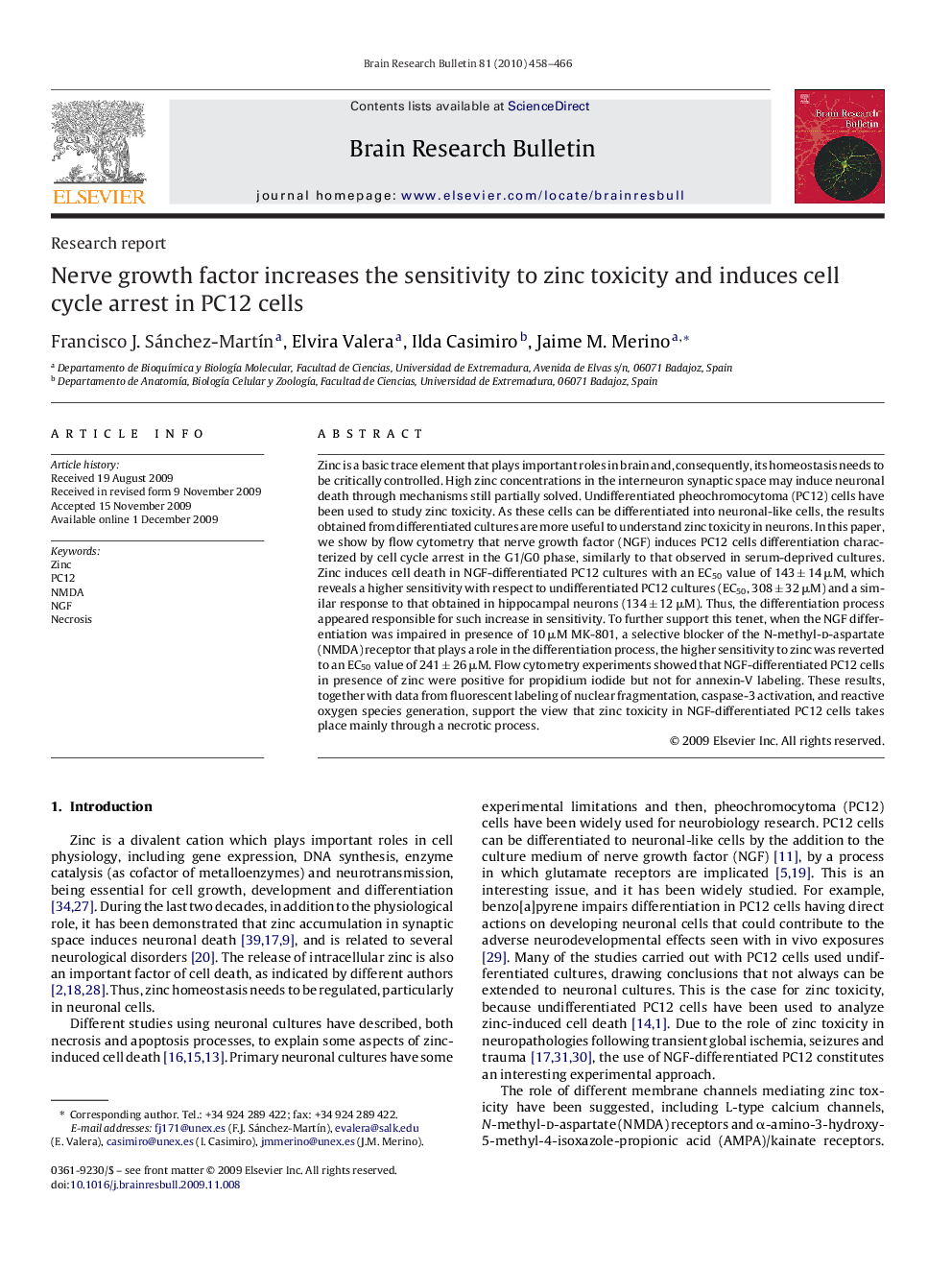| Article ID | Journal | Published Year | Pages | File Type |
|---|---|---|---|---|
| 4319328 | Brain Research Bulletin | 2010 | 9 Pages |
Abstract
Zinc is a basic trace element that plays important roles in brain and, consequently, its homeostasis needs to be critically controlled. High zinc concentrations in the interneuron synaptic space may induce neuronal death through mechanisms still partially solved. Undifferentiated pheochromocytoma (PC12) cells have been used to study zinc toxicity. As these cells can be differentiated into neuronal-like cells, the results obtained from differentiated cultures are more useful to understand zinc toxicity in neurons. In this paper, we show by flow cytometry that nerve growth factor (NGF) induces PC12 cells differentiation characterized by cell cycle arrest in the G1/G0 phase, similarly to that observed in serum-deprived cultures. Zinc induces cell death in NGF-differentiated PC12 cultures with an EC50 value of 143 ± 14 μM, which reveals a higher sensitivity with respect to undifferentiated PC12 cultures (EC50, 308 ± 32 μM) and a similar response to that obtained in hippocampal neurons (134 ± 12 μM). Thus, the differentiation process appeared responsible for such increase in sensitivity. To further support this tenet, when the NGF differentiation was impaired in presence of 10 μM MK-801, a selective blocker of the N-methyl-d-aspartate (NMDA) receptor that plays a role in the differentiation process, the higher sensitivity to zinc was reverted to an EC50 value of 241 ± 26 μM. Flow cytometry experiments showed that NGF-differentiated PC12 cells in presence of zinc were positive for propidium iodide but not for annexin-V labeling. These results, together with data from fluorescent labeling of nuclear fragmentation, caspase-3 activation, and reactive oxygen species generation, support the view that zinc toxicity in NGF-differentiated PC12 cells takes place mainly through a necrotic process.
Related Topics
Life Sciences
Neuroscience
Cellular and Molecular Neuroscience
Authors
Francisco J. Sánchez-MartÃn, Elvira Valera, Ilda Casimiro, Jaime M. Merino,
